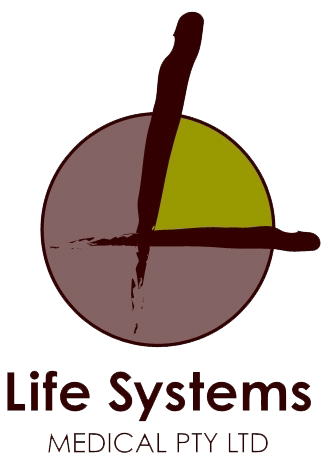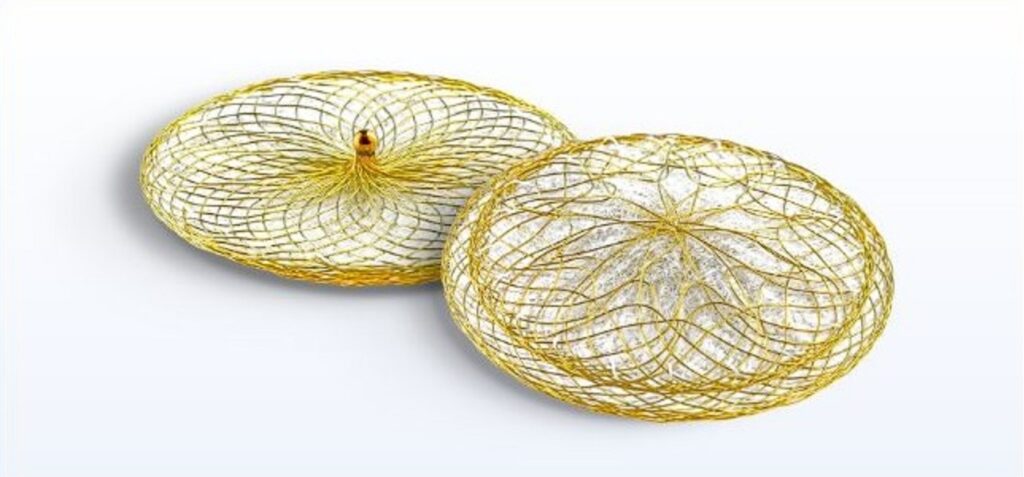- The Occlutech PFO Occluder has conformable Nitinol braiding with a biocompatible titanium oxide surface.15
- Optimized braiding: no hub on the left atrial disc to facilitate endothelization.21, 22
- Biocompatible Polyethylenterephthalat (PET) patch allows immediate verification of the occlusion effect by ultrasound and X-ray.
- The ball connection allows up to a 50 degree angle which is intended to reduce tension on the septum, and allow septal alignment prior to release.13, 14, 22
- PFO closure using the Occlutech PFO Occluder reduces recurrent stroke ascribed to PFO.1-3 This reduction was proven successfully in retrospective and prospective clinical trials.17-19
- Mean procedure time: less than 30 minutes with reduced (P = 0.47) mean fluoroscopic time less than 4.4 mins.1
- The Occlutech PFO Occluder shows procedural success rate of 99% with efficient closure in 95.5% after six months.1, 20
Content references:
- Trabattoni, D. et al. AMPLATZER versus Figulla occluder for transcatheter patent foramen ovale closure. EuroIntervention 12, 2092–2099 (2017)
- Snijder, R et al. Percutaneous patent foramen ovale closure using the Occlutech Figulla device: More than 1,300 patient-years of follow up. Catheterization and Cardiovascular Interventions 93, (2018)
- Snijder et al. Microtransesophageal Echocardiographic Guidance during Percutaneous Interatrial Septal Closure without General Anaesthesia. J Interv Cardiol 2020, 1462140 (2020)
- Honek J, et al. Patent Foramen Ovale Closure Is Effective in Divers: Long-Term Results From the DIVE PFO Registry. J Am Coll Cardiol 76, 1149–1150 (2020)
- Ates Long-term follow-up outcomes in a real-world study cohort after percutaneous patent foramen ovale closure. (2010)
- Aral and Mullen. The Flatstent versus the conventional umbrella devices in the percutaneous closure of patent foramen ovale. Catheter Cardiovasc Interv 85, 1058–1065 (2015)
- Davies et al. Multidisciplinary Assessment in Optimising Results of Percutaneous Patent Foramen Ovale Closure. Heart Lung Circ 26, 246–250
- Hildick-Smith, D. et al. Occlutech percutaneous patent foramen ovale closure: Safety and efficacy registry (OPPOSE). Int J Cardiol 245, 99–104 (2017)
- Neuser, J. et al. Mid-term results of interventional closure of patent foramen ovale with the Occlutech Figulla® Flex II Occluder. BMC Cardiovasc Disord 16, 217 (2016)
- Scalise et al. Long-Term contrast Echocardiography and clinical Follow-up after percutaneous closure of PFO using two different ASD devices (2016)
- Wittczak et al. Transcatheter closure of patent foramen ovale in patients with cryptogenic stroke: impact on arrhythmia in 3 months follow-up. Folia Cardiologica 16 (2021)
- Willits et al. Patent foramen ovale closure: A prospective UK registry linked to hospital episode statistics. PLoS One 17, e0271117 (2022)
- Leong, M. C., Karyostyko, B., Ramli, M. N. H., Tan, J. W. Y. & Alwi, M. The Ceraflex and Figulla atrial septal occluders: early and intermediate-term safety and efficacy study. Cardiol Young 1–7 (2022) doi:10.1017/S1047951121004728.
- Kenny, D. et al. A randomized, controlled, multi-center trial of the efficacy and safety of the Occlutech Figulla Flex-II Occluder compared to the Amplatzer Septal Occluder for transcatheter closure of secundum atrial septal defects. Catheterization and Cardiovascular Interventions 93, (2018)
- Castleman et al (1997). Biocompatibility of Nitinol Alloy as an Implant material. Journal of Biomedical Materials Research. 97 6;10:695
- Electrochemical Characterization of Nitonol Occluder, Natural and Medical Sciences Institute at the University of Tubingen. mNl<0.14ug (cm*d)
- Saver, J. L. et al. Long-Term Outcomes of Patent Foramen Ovale Closure or Medical Therapy after Stroke. New England Journal of Medicine 377, 1022–1032 (2017)
- Søndergaard, L. et al. Patent Foramen Ovale Closure or Antiplatelet Therapy for Cryptogenic Stroke. N Engl J Med 377, 1033–1042 (2017)
- Mas, J. L. et al. Patent Foramen Ovale Closure or Anticoagulation vs. Antiplatelets after Stroke. New England Journal of Medicine 377, 1011–1021 (2017)
- PROOF_CSR_02Feb2023_final (Internal document)
- Tanabe, Y. et al. Angioscopic Evaluation of Atrial Septal Defect Closure Device Neo- Endothelialization. J Am Heart Assoc 10, e019282 (2021).
- Data on file


